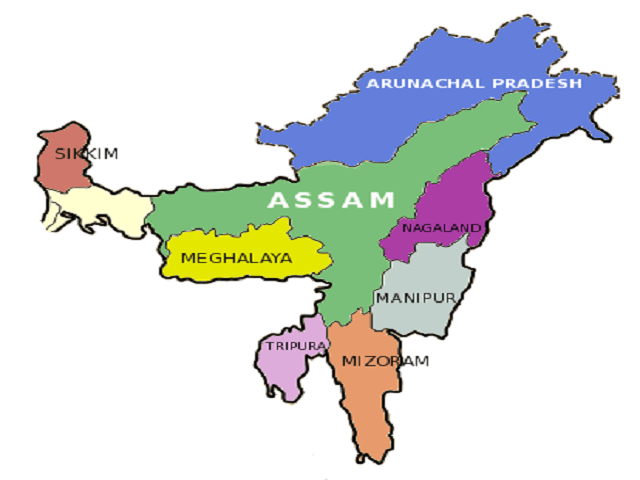-
02 Aug 2023
GS Paper 3
Internal Security
Day 15: What are the factors that trigger frequent violence in the Northeastern states of India? Elaborate on potential solutions to establish sustainable peace and normalcy in the region. (250 words)
- Start your answer with an overview of NE region and provide data related to violence in the NE region.
- Discuss what are the factors that trigger frequent violence in the Northeastern states.
- Elaborate on potential solutions to establish sustainable peace and normalcy in the region.
- Conclude suitably with emphasis on peace in the region.
Answer:
The Northeastern region of India comprises eight states namely Arunachal Pradesh, Assam, Manipur, Meghalaya, Mizoram, Nagaland, Sikkim and Tripura. The region is home to diverse ethnic groups, cultures, languages and religions.
The Northeastern region (NER) comprises eight states. These states share borders with China, Myanmar, Bangladesh, Bhutan and Nepal, and have diverse ethnic, linguistic, religious and cultural identities. The NER has witnessed various forms of violence since independence, ranging from insurgencies, ethnic clashes, secessionist movements, border disputes and terrorism.
- During 2001-2021, a total of 1,062 civilians lost their lives. During 2020, only 2 civilian deaths due to violence were reported in the whole of the Northeast. This increased to 23 in 2021 and may increase many times in 2023 because of the ongoing violence in Manipur.
Some of the factors that trigger frequent violence in the Northeastern states are:
- Historical grievances: Many ethnic groups in the region have a history of resistance and rebellion against the Indian state, which they perceive as oppressive, exploitative and indifferent to their aspirations.
- Some of these groups demand autonomy, self-determination or secession from India, such as the Naga.
- Ethnic identity: The region is marked by a complex mosaic of ethnic identities, often overlapping with linguistic, religious and territorial affiliations. These identities are sometimes mobilized for political or economic interests, leading to inter-ethnic conflicts and violence.
- For instance, the Bodo-Karbi clashes in Assam in 1996-97 and the Dimasa-Hmar clashes in Assam in 2003-04 were triggered by disputes over land, resources and autonomy.
- Geopolitical factors: The region shares porous borders with Bangladesh, Bhutan, China, Myanmar and Nepal, making it vulnerable to cross-border infiltration, smuggling, trafficking and militancy.
- Some insurgent groups have established bases or received support from neighboring countries, such as China.
- Socio-economic factors: The region faces several socio-economic challenges such as underdevelopment, poverty, unemployment, corruption, migration and environmental degradation.
- These factors create discontent and frustration among the people, especially the youth, who may resort to violence or join militant groups as a means of protest or survival.
Some possible solutions to establish sustainable peace and normalcy in the region are:
- Political dialogue: Government should engage in sincere and inclusive dialogue with various stakeholders in the region, including insurgent groups, civil society organizations, and ethnic leaders to address the root causes of violence and grievances.
- Ethnic harmony: The government and civil society should promote ethnic harmony and coexistence among different groups in the region through confidence-building measures, cultural exchanges, inter-faith dialogues and joint development initiatives.
- The government should also prevent and punish any acts of communal violence or hate crimes.
- Geopolitical cooperation: The government should enhance its cooperation with neighboring countries to address cross-border issues such as terrorism, smuggling, trafficking and migration.
- The government should also leverage its Act East policy to boost trade, connectivity and cultural ties with Southeast Asia through the Northeast region.
- Socio-economic development: The government should invest more in the socio-economic development of the region by improving infrastructure, education, health care, employment, governance and environmental protection.
- The government should also encourage participation and empowerment of the people in decision-making processes.
The Northeastern region is a rich and diverse area that has immense potential for growth and prosperity. However, it also faces several challenges that trigger frequent violence and instability. By addressing these challenges through dialogue, harmony, cooperation and development, the region can achieve sustainable peace and normalcy. This will not only benefit the region but also the entire country.





